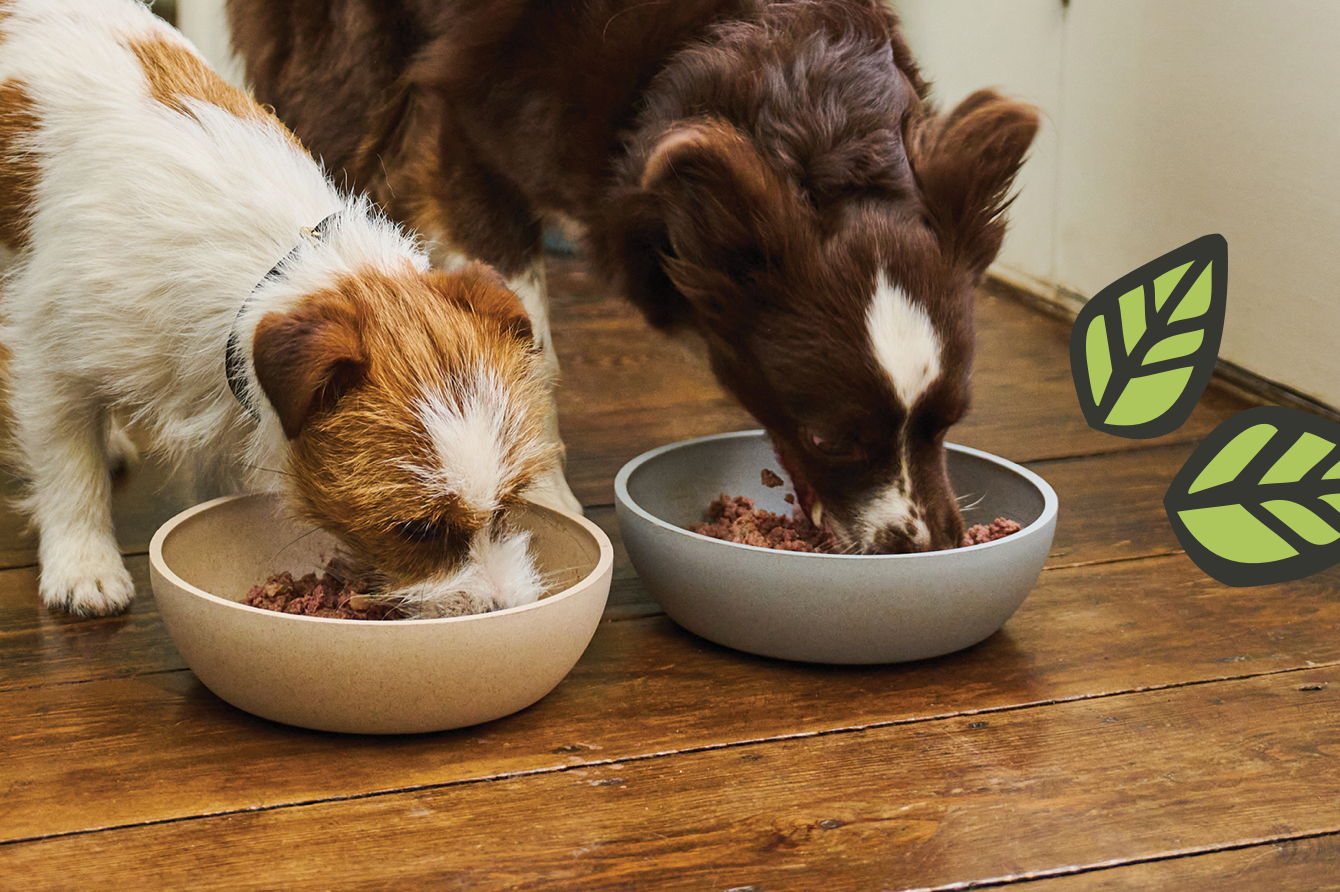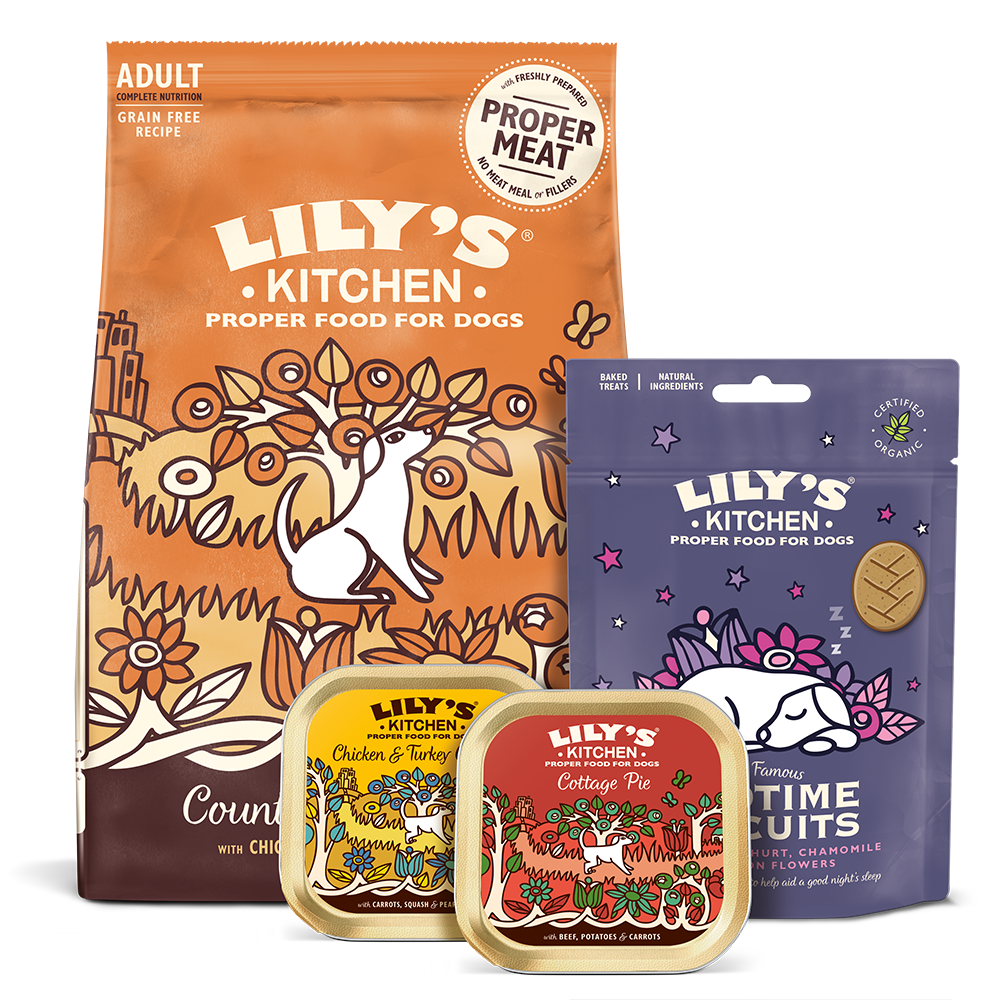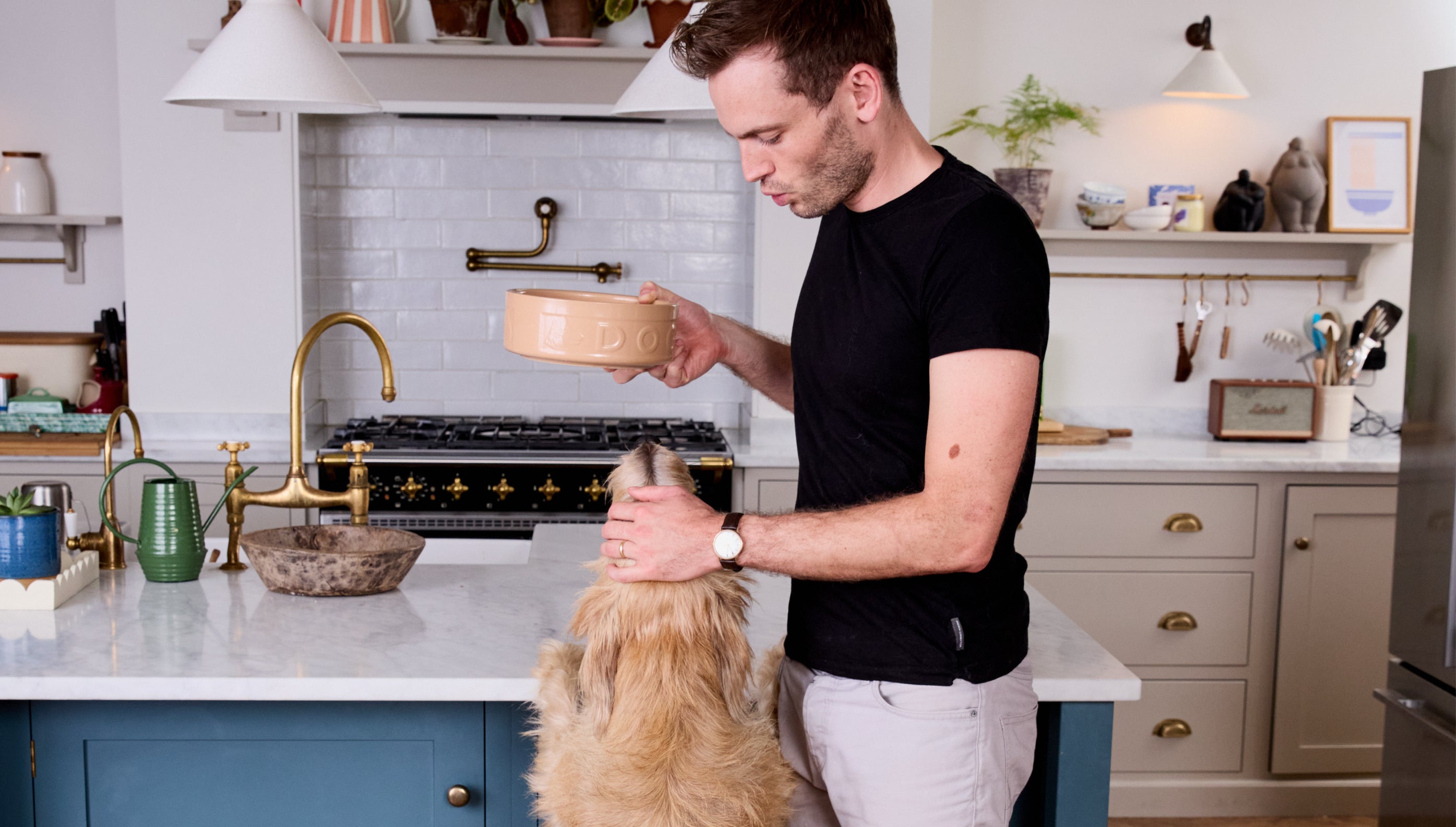Every dog needs a complete and balanced daily diet full of goodness and wholesome ingredients to help keep them in tip top condition. That means they can focus on the important stuff, like getting up to their usual everyday mischief, wreaking havoc in muddy puddles, gallivanting around parks and generally living their very best doggy lives. Here, you’ll find all our tips on feeding them - advice on their needs, choosing the right food, tips for mealtimes and how to give your four-legged friend all the nutrients they need to be happy and healthy. Let’s begin, shall we?
YOUR DOG'S FEEDING NEEDS
A balanced diet will contain all the key nutrients in the correct proportions to allow your dog to be active and healthy. Your dog’s individual dietary needs will depend on their age, state of health and level of activity.
The seven key nutrients vital for your dog’s life are:
● Protein
● Fats
● Carbohydrates
● Fibre
● Vitamins
● Minerals
● Water
These are the building blocks for each and every cell in their body. They play an important role in maintenance as well as repair, helping to keep your dog physically and mentally healthy. Their food is the fuel that keeps them active (someone’s got to sniff every dog in the park!) and drives all their bodily functions.
TIPS FOR FEEDING YOUR DOG A HEALTHY DIET
It’s not just about what you feed them, it’s also about how you feed them. Everything from the location to the time they’re fed impacts your little one’s appetite.
FEED AT A REGULAR TIME EACH DAY
Digestion works better when there is a routine feeding time so your dog can eat without feeling stressed.
Most dogs do better on two meals a day (breakfast and dinner) rather than just the one because it’s easier for them to digest smaller meals. Some smaller breed dogs may benefit from three smaller meals a day, whilst some larger breed dogs may only need one meal a day. It is up to their pet parent to determine what option is best for their pet. For instance, if your larger breed dog tends to eat their food quickly, it may be best to offer them two smaller meals instead to avoid potential gastrointestinal problems in the future. For anyone unsure about how often they should feed their dog, speak to your veterinarian who can offer you personal advice.
A RELAXING ENVIRONMENT
Try and give your dog their meals in a quiet and calm environment, as their digestive system works best when your pooch is at rest. Feed them when they have time to relax afterwards for a good hour or so.
If you have more than one dog, make sure that you feed them at the same time, and that each one has the chance to eat at their own pace without competition from the others. Because, let’s face it, no one likes to share their dinner! Us included.
MAKE DIETARY CHANGES GRADUALLY
Always make any dietary changes gradually. Sudden changes to the diet can cause tummy upsets. So, if you are either changing to a different recipe or changing to a new food, it’s best to introduce it into your dog’s diet bit by bit over about a week. Start with a mix of 4/5 of your current food to 1/5 of the intended recipe.

CHOOSE HEALTHY VARIETY
Unless your dog has digestive issues or is sensitive to certain ingredients, it’s a good idea to carefully introduce different recipes, so that they can enjoy variety in their diet - for both taste and nutrition. Afterall, we don’t eat the same meal every day, so why should your best pal? Mix up their menu and watch their tail wag reach new speeds.
“COMPLETE FOOD GIVES YOUR DOG THE BEST NUTRITION FOR EACH STAGE OF THEIR DEVELOPMENT”
COMPLETE NUTRITION
A complete and balanced diet such as Lily’s Kitchen food helps dogs throughout their lives, with the best nutrition for each stage of their development.

The information in this article is intended as a guide to help pets and pet parents on their journey together. It is provided for educational and informational purposes only and is not meant as a substitute for professional advice from a vet, behaviourist, trainer or other professional. We encourage all pet parents to consult with their vet and/or behaviourist to ensure their pet’s specific needs are met.





